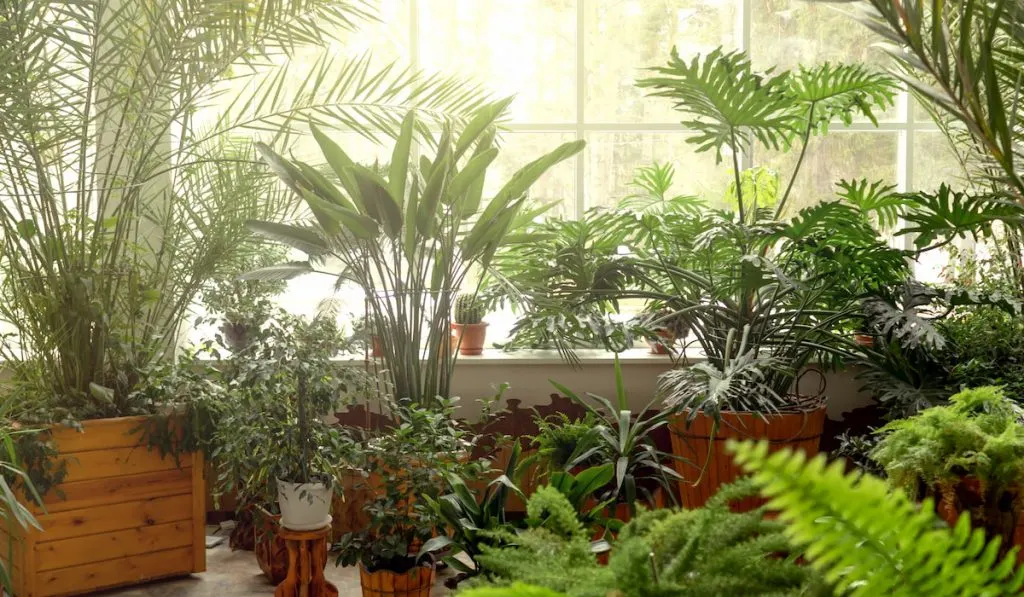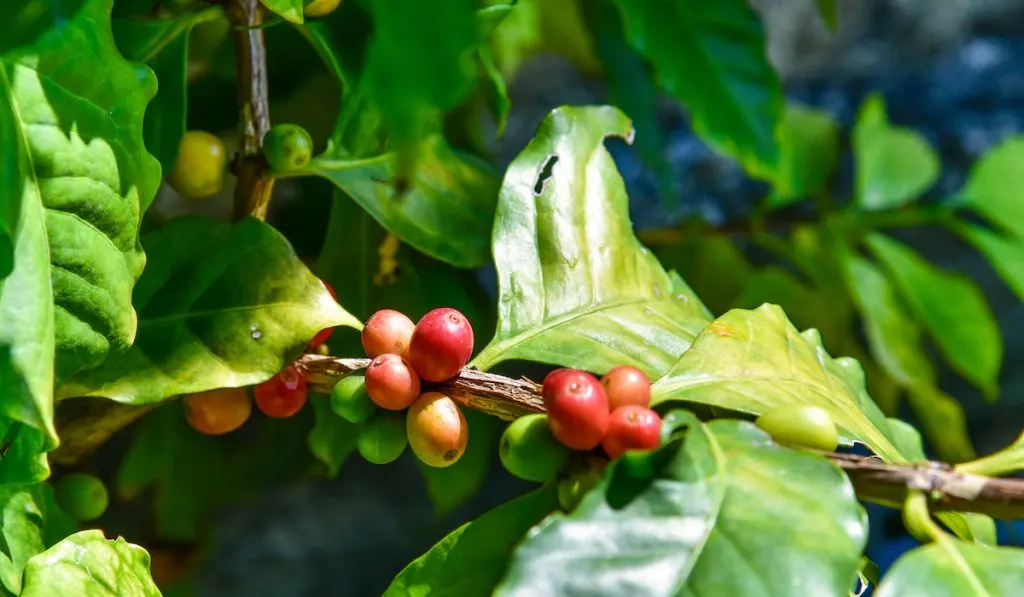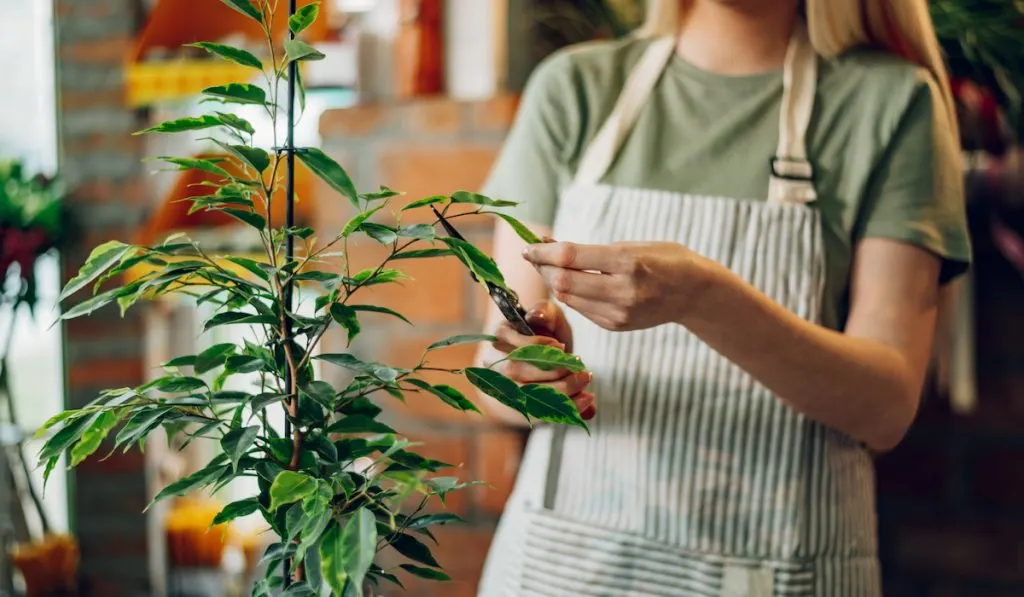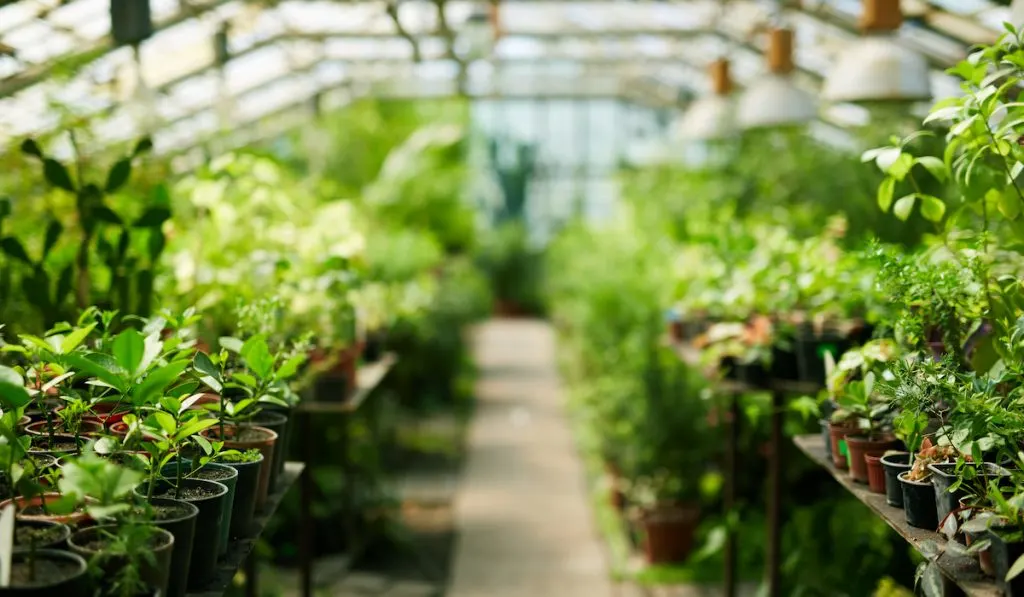Coffee plants could be a beautiful addition to your house garden. They are bush-like plants and grow exquisitely scented flowers. Their dark-colored leaves and red fruit will greatly embellish your indoor space.
Along with beauty, you can also harvest coffee beans from indoor plants. You can grow a perfect coffee plant at home by sowing a seed obtained from fully ripened coffee cherries.
In this article, we have put together some information about indoor coffee plants and when and how you can get beans from them.
Beans on Indoor Coffee Plants
Coffee plants require a significant period of time to grow their fruit. When you grow them at home you need to consider many factors to get the desired result. For instance: humidity, indirect sunlight, and temperature.
You should grow coffee indoors instead of outdoors for the following reasons:
- Differing humidity levels
- Severely hot weather
- Seasonal Changes
When you grow plants indoors, it is easier for you to provide them with the required conditions. Here is a brief guide to help you plant coffee trees indoors:

- Try to fix your plant near a window, where the plant is not exposed to the sun directly. The area must be vividly bright. You might also want to keep the plants outdoors at times for full sun exposure. Do this when the weather is appropriate. Temperatures below 65°F is considered severe for these plants.
- Coffee plants need a good amount of water. Keep an eye on the plant and do not let the soil go dry.
- They flourish properly in humid conditions. Therefore, keeping the pot on a tray filled with pebbles and water will be a brilliant idea to maintain humidity.
- Choose a pot with a good drainage system.
- Like every other plant, coffee arabica plants need good fertilizer. 10-10-10 fertilizer will work best for your plants.
- Do consider the space while growing coffee indoors. The coffee trees reach a height of 6.5 feet when grown inside. If you don’t have a lot of space, timely pruning will work.
- Coffee plants take a significant period of time to mature. After providing them with the best care, you’ll need to wait for 4-8 years for them to grow their flowers and have a chance to produce fruit.
- Indoor coffee plants produce beans if you use the process of mechanical pollination. The indoor plants might not produce enough beans to allow you to prepare a cup of coffee.

Do Coffee Plants Grow Coffee Beans?
Coffee plants will indeed grow coffee beans if they are provided with the right conditions.
Coffee beans refer to the seeds that you get from the fruit known as a coffee cherry that the coffee plant bears. Each fruit bears two seeds. When the cherries change color from green to dark red, you can pick them.
On a larger scale, a large workforce is required to get the beans. However, in some countries, it is done by machines. It is a laborious method, even if you use machines.
The reason for that is that only ripened cherries are supposed to be picked. So, visiting the garden and looking for selective cherries could be challenging.
How Long Does it Take to Get Coffee Beans from a Coffee Plant?
It takes a long time for coffee plants to bear flowers. You might have to wait from 4 to 8 years to see flowers on your plant. Even after bearing fruit, the plant might take another year to ripen the cherries.
Plucking cherries before they are fully red and mature will give you no beans.
How Big Do Indoor Coffee Plants get?
Coffee plants need open space to grow. They grow into medium-sized trees in their natural habitat. They can grow as high as 40 feet tall outdoors.
An indoor plant can grow as big as 6–15 ft. tall and wide. You can manage its length by timely pruning.
Here is how you should prune the coffee plants.
Pruning of Coffee Plants

Pruning is the most important thing to perform if you have a coffee plant indoor or outdoor. Six feet is a good height of a plant to make it manageable.
Pruning might range from cutting newly unfurled leaves to fully grown branches.
Spring is the best time to prune them. Your aim in pruning is to maintain a heavy branch count yet keep it manageable for harvesting.
Always use sharp pruning shears to prevent harm to the rest of the plant. Cut the stem at a 45-degree angle and a quarter of an inch above where the leaf is attached to the stem. It is better to prune the soft stems instead of going for harder ones.
How to Process Homegrown Coffee Beans
Here is a small guide about processing your homegrown coffee beans:
- Choose the cherries which are at the peak of their ripeness.
- Start processing the fruit right after you pick it. Otherwise, it might start going bad. There are two methods you could use to process them:
- The Dry Method
- The Wet Method
- In the dry method, you keep the beans in the sun. Keep shuffling them throughout the day to keep all the sides from spoiling. You will have to repeat the process until they are totally dried up. You will know that the beans are ready when they become crispy.
- For the wet method, you will have to soak the beans in water. Let them stay in the water until the flesh of the fruits separates from the seeds. Beans are ready when they don’t feel slimy anymore.
- To separate the parchment layer of the beans, use a towel. Rub it or use a rolling pin to roll over it. This way you can separate the husk from the beans quite easily.
- The next step will be roasting the beans. You can easily roast them on the stovetop. The darker the beans, the enhanced the taste and fragrance. You can only brew roasted seeds to make coffee. Once roasted, they are not appropriate to grow new plants.

Common Varieties of Coffee Beans
There are many varieties of coffee. However, the commonly used varieties are Robusta and Arabica coffee beans.
These are some of the differences between the two varieties:
- Arabica has a milder and sweeter taste as compared to Robusta beans
- Robusta Coffee is a lot more convenient to grow than Arabica
- Arabica costs more than Robusta because of its preferred taste
- Robusta contains double the amount of caffeine as Arabica
You can choose which beans you prefer according to these differences.
How Often Should You Water Coffee Plants
Coffee plants grow the best in moist soil. The perfect way to keep the soil damp is by watering it properly. You should drench the soil and let the extra water flow out of the pot. Check carefully to make sure the water doesn’t pool in the pot.
Plants’ water requirements may vary according to seasons. You do not need water plants repeatedly in winters. However, make an extra effort to water plants in summer. If you notice that your plants have slacked leaves or dry soil, they need to be watered.
Common Pest Issues for Coffee Arabica
Here are some of the problems that could occur to your coffee plants:
Coffee Berry Borers
Berry borers are small, black-colored pests that are found in every coffee-producing country. It is not easy to kill them because they live inside the cherries.
They are dangerous for your crop because they do not let the plant grow. It also causes cherries to fall. If the cherry happens to mix with the healthy fruit, it produces low-quality beans.
Coffee brewed out of these seeds tastes bitter. You could prevent their attack by keeping the plant in the shade. You can also prune the infected part from the tree. Keeping the plant at a certain height may also help you save plants from being destroyed by them.
Coffee Leaf Miner
Coffee leaf miner is a common pest that attacks coffee leaves. It damages plant cells and leaves dark spots on the leaf.
The spots make the leaves look like brown paper. It prevents the proper growth of the crop. The coffee beans also get a tinge of bitterness.
Aphids
Aphids attack the coffee plants in the rainy season. The most affected part of the plant is its newly born shoots. You can spray neem oil or laundry soap to prevent them from ruining the plant.
Yellow Leaves
Your coffee plant will start showing yellow leaves if it develops an iron deficiency. When you prepare the soil to sow seeds, add iron-rich fertilizer so that you grow a healthy plant.

Precaution To Save Plants from Diseases and Pests
You can save your coffee plants from diseases and pests by following some measures:
Good Farm Management
Farm management plays a great role in preventing plants from diseases or pests. Do in-depth research and monitoring before you plant the seeds.
Use Balanced Fertilizers
Every crop demands nutrients for its optimum growth. A well-balanced fertilizer will prevent the crop from getting diseases.
Use Certified Pesticides
Buying pesticides from a certified source is also a key factor to consider.
Provide Soil With Good Nutrition
Coffee crops need nitrogen and iron. If the soil lacks any of these elements, the crops become vulnerable to diseases.
Controlled Temperature
Make required arrangements to control the temperature for outdoor crops. If the sun becomes severe, try to provide shade for the plants.
Humidity
The right humidity level is as important as any other factor for coffee crops. Try to grow these crops where the air is moist. Lack of humidity turns leaves brown.
Pruning
Timely pruning also saves the plants from diseases. As all the branches take up nutrients from the soil.
If they grow more than a certain extent, the soil nutrients might be short of nutrients for all branches. It makes the tree vulnerable to diseases.
Hygiene
Maintaining hygiene in the crop surroundings also makes an enormous difference. Pests are more likely to be found in polluted areas.
Timely Monitoring
Timely monitoring keeps you updated. If you catch them in time, you can better control diseases in their preliminary stages.
Final Thoughts
Nothing is better than enjoying coffee brewed out of fresh beans. Even better, you can grow your own coffee plant to brew your coffee from freshly roasted beans.
Whether you have a small garden or no garden at all, coffee beans can be grown from indoor plants. You can enjoy homegrown coffee beans with only a little effort.
The taste of the coffee beans is enhanced by the right temperature, light, and other factors during crop growth.
